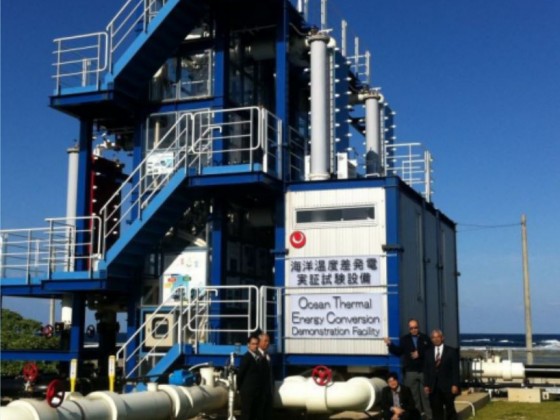by | PM. Dr. Fauziah Sh. Ahmad | International Business School, UTM
What is techno-economic Analysis (TEA) in Ocean thermal energy Conversion (OTEC) and why it is important?
TEA is basically a combination of feasibility and viability assessment of an intended technology-based project. For example, in the case of OTEC, we have to combine the process modelling of the OTEC engineering design with economic evaluation to gain both qualitative and quantitative understanding of the market and financial impacts of the conversion breakthrough.
In other words, we must understand thoroughly the conceptual process design, the energy gains, the capital and project cost estimates, the capital budgeting and the environmental analysis.
How do we evaluate and develop appropriate perspectives towards the viability of long-term technology infrastructure projects such as OTEC?
From a micro perspective, developing a commercially-viable project is crucial to firstly ensure adequate revenues to cover costs, operation and maintenance; and secondly in mitigating risks and attracting commercial investments.
However, we must also adopt the macro perspective in anticipating project spinoffs in the form of development catalyst, social impact and environmental sustainability. These positive impacts might not be captured in the cash flow or income statement of the OTEC investment. So, we have to be more positive and open to see things in a bigger perspective.
What are the essential elements for a good financial viability study in the TEA of OTEC?
Basically, some elements of the Financial Plan include: Important Assumptions, Key Financial Indicators, Break-even Analysis, Projected Income Statement/Profit and Loss, Projected Cash Flow, Projected Balance Sheet and Business Ratios.
An analysis of the cash availability and cash needs of the business must reflect a company’s operating, investing, and financing activities on its cash balance. The considerations include how much cash does the venture generate from operations? How to finance fixed capital expenditures? How much new debt to leverage on? Would the cash from operations sufficiently finance the business?
Financiers would normally rely on a cash flow budget which may be the best approach to start a venture. They also rely on Capital Budgeting which explains Payback Period or the length of time required to ‘pay back’ (recapture) the original investment. It must also reveal the Net Present Value (NPV) which relies on the premise that a dollar today is worth more than a dollar in the future. The cost of capital is the rate used to adjust future cash flows to determine their value in present period terms. This procedure is referred to as discounting the future cash flows—cash value is determined by the present value of the cash flow. Another consideration is the Internal Rate of Return (IRR method) which is similar to the net present value method, but future cash flows are discounted at a rate that makes the net present value of the project equal to zero.
How viable is the OTEC project in Malaysia based on your TEA study?
We have the capacity and the required natural temperature differences in sea water based on the required depth of the water. These technical aspects have been thoroughly investigated by our engineers. So my focus is to translate the conversion process into financial statements to appreciate the potential financial returns. We need to anticipate the value of the energy gained, in this case in terms of hydrogen power revenue vis-a-vis a comparable energy. The market is more comfortable comparing renewable energy prices to current oil rates although, I must say, this is not the best of solutions as certain attractive aspects like energy efficiency, renewable capacity and non-greenhouse gas emissions would not be accounted for. Nonetheless, we follow the ‘popular market’ needs and work on numbers based on oil prices which have dropped significantly from US$100/barrel to US$70/barrel recently.
We made certain assumptions on plant capacity, capital costs per Megawatt and exchange rate; and the findings indicate reasonable net present value (NPV) and internal rate of return (IRR) which is at RM41 million and 14.32% for 5MW Plant at an oil price of US$100/barrel. When the oil price dropped to US$70/barrel, the NPV dropped to RM23 million and the IRR became 12%. So we can conclude that it is a reasonable financial return for a small capacity plant. With a bigger plant, we can anticipate better conversion efficiencies and better returns as well.









